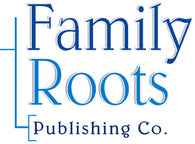
Spelling Variations in German Names: Solving Family History Problems Through Applications of German and English Phonetics
Spelling Variations in German Names: Solving Family History Problems Through Applications of German and English Phonetics; by Roger P. Minert, Ph.D., A.G.; Published 2000; Reprinted 2025; 88 pp; Soft Cover; Item # FRM0002
For the first time a book examines the nature of each vowel and consonant in German and describes the kinds of changes that can occur in the spellings of German personal names and place names. Variations of name spellings in Germany and between Germany and North America are featured. The book is designed for both novice and expert researchers; while the former can discover why specific changes in name spellings occur, the latter will find explanations for what the researcher may have already known about those changes. Phonetic rules are discussed, but the reader is invited to skip those and use a trouble-shooting guide of over 200 names to proceed directly to examples of name variations. An every-name index is included. The thesis of this book is that name-spelling variations are:
- Natural,
- Logical,
- and thus to an extant predictable.
TABLE OF CONTENTS
Introduction
List of Tables, Illustrations, and Maps
1.0 History
2.0 Symbols and Notations
3.0 Vowels: Introduction.
3.1 Length of vowels.
3.2 Location of vowels in the mouth.
3.3 Unrounded vowels.
3.4 Rounded vowels.
3.5 Doubled vowels.
3.6 Diphthongs.
3.7 The character ie
3.8 Silent vowels.
3.9 Unaccented neutral vowel
3.10 Search/research tactics with vowels in Germany
3.11 Search/research tactics with vowels between Germany and America.
4.0 Consonants: Introduction
4.1 Points of articulation
4.2 Types of articulation.
4.3 More important terms describing consonants.
4.4 Specific consonant sounds.
4.5 Doubled consonants
4.6 Search/research tactics with consonants in Germany
4.7 Search/research tactics with consonants between Germany and America.
5.0 Elision of e and i
5.1 Elision of e and i in unstressed syllables.
5.2 Elision of e in the diphthong environment.
6.0 Non-Phonetic Variations
6.1 The suffix -in
6.2 Possessive markers.
6.3 Latin declinations.
6.4 Errors in deciphering and extracting names
6.5 Names translated entirely or partially
7.0 The Old High German Sound Shift
7.1 The role of the Old High German Sound Shift in German genealogical research: Introduction.
7.2 The theory of the Old High German Sound Shift.
7.3 Practical application of the OHGSS in genealogical research.
7.4 Summary
8.0 Conclusions
9.0 Trouble-Shooting Guide to Name Spelling Variations: Introduction
Notes
Annotated Bibliography
Glossary
Table 12: Trouble-shooting Guide.
Every Name Index.
